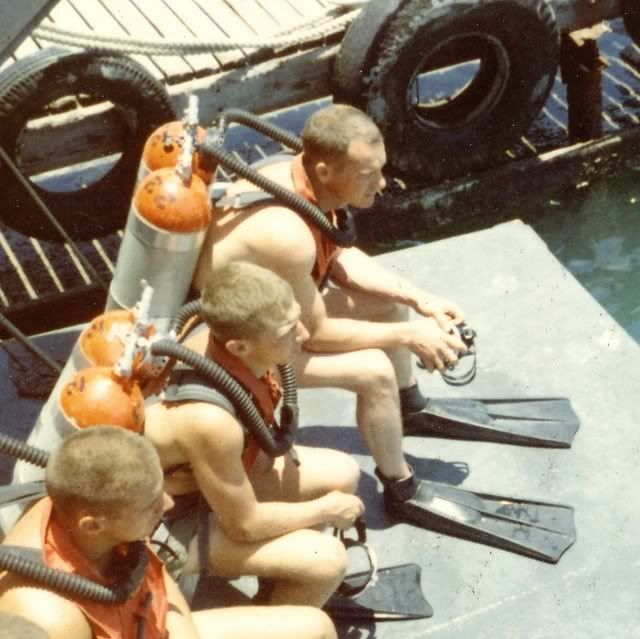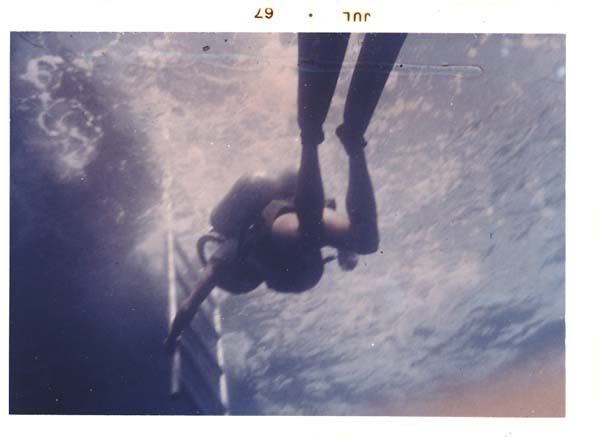It's good for all who think it is ok to overfill that there will probably not be anyway of telling if this was the cause. In fact it's my belief that even if it were there are some who would continue it's practice. Merely side stepping my point by pointing out the risk to Cave divers being low on the risk list is comic at best. You want more gas get a bigger tank or higher PSI tank. Configure your gear to work with it. Use all those math skills to figure out how to stay safe instead of how to be-unsafe.
Just to be perfectly clear, I am not trying to say that it is or is not safe to fill low pressure steel tanks, those that have a service pressure of 2400psi (not the older, thinner walled steel 72's with a service pressure of 2250 psi), to a pressure over 3000 psi.
What I AM trying to say, is that it is illogical to, after any scuba tank explodes, assume that filling those aforementioned steel tanks to those aforementioned higher pressures, poses an elevated danger to divers.
What if the tank that exploded was aluminum? Then, your entire argument about overfilling steel tanks is entirely worthless. If every single aluminum 80 in the world exploded today, you would still have no grounds to state that steel tanks are dangerous.
What if the tank that exploded was steel? Then, perhaps you start to have a point. However, we'd have to look at the condition of the tank. A tank can be dangerous at pressures below service pressures if it is damaged in some way.
What if the tank was steel, but filled to the service pressure, and with the proper burst disk? I'd tend to think your argument carries no weight at that point as well.
There is no reason to avoid every thing that has hurt someone in the past, however. Life always has risk. How should we avoid that risk? We could all just stay home and never participate in any events, because a lot of people die while doing things like sports, or driving. But, I know research has shown that a surprising amount of deaths happen in or near the home. So, even staying home, sitting in a chair not moving all day, could be fatal. Eating can be fatal, not eating can be fatal. Just by sitting in one spot, you can get bed sores, which when infected, can kill you. But, by moving around, you do run the risk of falling and hitting your head, killing you.
This is why scuba divers engage in accident analysis. In reality, everyone does this. We observe that lighting yourself on fire tends to be harmful, so we avoid it. We observe that driving the wrong way down the road can be bad, so we avoid it. But, we observe that driving while following the law can sometimes be fatal, but there are huge benefits to driving, so we drive. We install airbags, and wear seatbelts, but we don't wear fire suits or helmets.
Cave divers have observed that diving without training tends to kill a lot of people, so we avoid it. We observe that breaking thirds kills a lot of people, so we avoid it. We observe that not running guidelines leads to fatalities, so we avoid that. However, how many cave divers have been killed by an overfilled steel tank? It might be one or two, maybe 5. However, that pales in comparison with other things that kill cave divers.
In fact, this is another interesting argument I hear a lot: diving thirds at Peacock is dangerous, because it's a low flow/no flow cave. That argument makes a ton of mathematical sense. It's really impossible to refute unless you can prove that your SAC rate improves when you are under stress. However, how many deaths does this lead to? Because thirds is technically insane at Peacock, I might turn early. However, I don't turn at 6ths like some divers do, because I recognize that in practice, diving thirds seems to not kill too many people at Peacock.
In the same way, I recognize that it seems insane to overfill steel tanks. However, even technically speaking, we know that steel tanks are, by virtue of their steel, able to handle expansion better. We also have the benefit of seeing steel tanks built to the same 3AA standard that are still working fine from quite a long time ago, much longer than aluminum tanks.
So, while I agree that you do have a point: overfilling steel tanks is not any safer than filling them to the service pressure, and has the potential to be less safe, I look at the data and do not see that many tank failures due to overfilled steel tanks. So, I don't think it's fair to consider overfilling steel tanks to be as dangerous as breaking thirds. If you want to save lives, focus on the things that historically have been shown to kill the most people.
Is that a fair look at the issue? We both agree: overfilling steel tanks can be catastrophic.
I would be very curious to hear your thoughts on the "exemption" tanks, which have faced problems with expansion and required changing the testing rules to allow them to pass hydro. Hearing that a lot of modern HP tanks have failed their first hydro without ever being overfilled has to make you feel safe using those at their rated fill pressure, compared to 3aa tanks overfilled by 50% passing their third or fourth hydroes, eh?
But hey, like I said, I really think that the talk of overfilling steel tanks is incredibly off topic, unless the tank in question was steel and overfilled. And, I really do want to know what caused this as I don't think anyone should die due to tank failure. It should be easy to avoid. I hope we all benefit from the knowledge brought to the surface from this accident, and can prevent it from happening again. If it was an overfilled steel tank, and if it can be shown that overfilled steel tanks are a risk, maybe steps can be taken to reduce or eliminate that risk.







